- India
- International
How Kannauj is preserving a long fragrant tradition
Kannauj in Uttar Pradesh has been able to bottle the smell of rain on earth — along with the ethos of the Indian way of life.
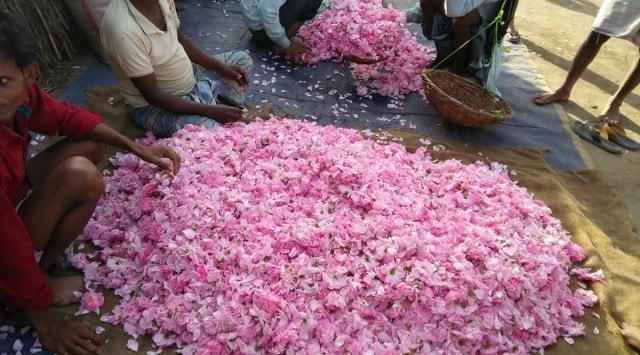 The light pink, fragrant 'desi gulab' is the most-suited for making attar. (Photo courtesy: DPSL Attars)
The light pink, fragrant 'desi gulab' is the most-suited for making attar. (Photo courtesy: DPSL Attars) What does the smell of fertile soil drenched in rain have in common with an enterprising queen going about her toilette? Both contributed to giving an ancient city in Uttar Pradesh a unique occupation and identity.
And the reasons this city, Kannauj, is in news right now encapsulate the story of Uttar Pradesh: muscular politics drowning out other aspects of an aesthete state that once turned the good life into good business – be it the elegant cuisine of Awadh, the exquisite chikan embroidery of Lucknow, or the ethereal fragrance industry of Kannauj.
At first glance, Kannuaj, located six hours away from New Delhi, is another generic North Indian small town so fetishised by OTT shows – dusty roads, stuttering e-rickshaws, placid bovines, coaching class hoardings. But if you know what to look for, clues to its fragrant history become apparent: a colourful arched gate announcing an itra karkhana (attar factory), perfume shops crowding its bazaars, and further inside, a heavy, sweet smell hanging over its narrow streets.
Kannauj has been distilling itra, or attar, for centuries now, coaxing roses, jasmines, and other flowers into giving up their fragrance, and quickly bottling them up with essential oils. But most famously, the town has been able to bottle petrichor, the smell of rain on earth, which they call mitti ka attar, the scent of soil. The attar made here is rich, with no diluted notes. Unlike alcohol-based perfumes, the fragrance is heavier but quieter, and lasts longer.
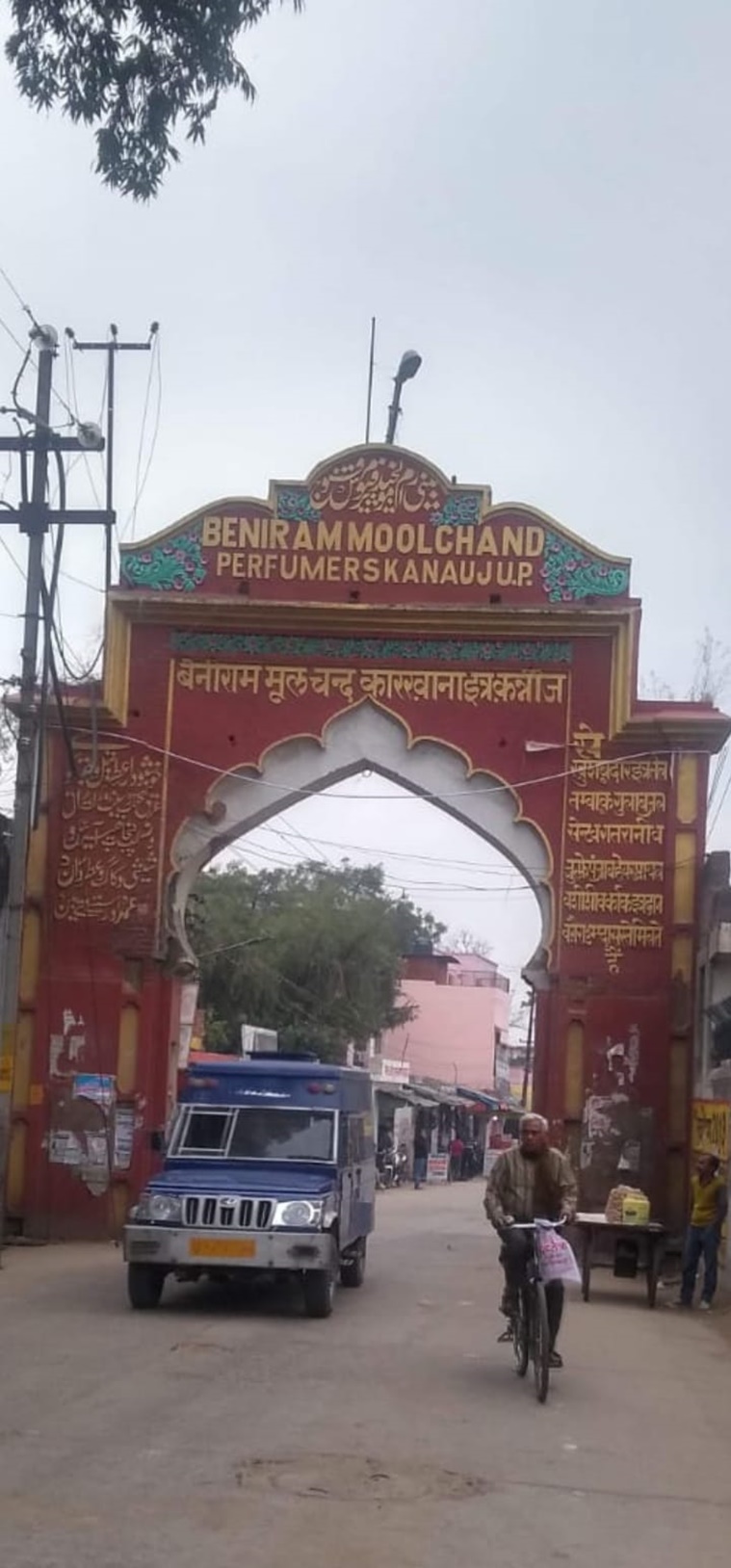 The fragrance industry in Kannauj has stood tall for centuries. (Photo: Yashee/Indian Express)
The fragrance industry in Kannauj has stood tall for centuries. (Photo: Yashee/Indian Express)
The method of fragrance extraction

The town still uses the traditional methods of fragrance extraction, employing no electricity or heavy machinery. Today, the value of the perfume business in Kannauj is over Rs 1,200 crore, and nearly 80% of its population of over 10 lakh is directly or indirectly involved in the industry.
Apart from the larger factories, ask anyone in Kannauj, and they will direct you to households that practise the traditional fragrance extraction, called the ‘deg bhapka’ method. Most fragrance traders will tell you they have been in the business for generations.
One such trader is Abhishek Samvedi, who owns Devi Prasad Shyam Lal Attars (DPSL) Attars, the fourth generation in his family to run the business. “My family got into the business in 1921. But the industry is ancient. In fact, the word ‘attar’ can be used only for the product of our steam distillation or deg bhapka process. Unlike western perfumes, Kannuaj’s fragrances use no alcohol, making them linger longer,” Samvedi says.
So what is the ‘deg bhapka’ method?
In this, flower petals, clay pieces, or spices, depending on the product being prepared, are boiled in large copper pots, called degs. The fragrant vapour is made to pass through a funnel, called chonga, and enter another container, called bhapka. The bhapka is kept in water so that the fumes condense inside it. The bhapka is filled with an essential oil – a liquid that has no odour of its own but can hold another’s fragrance – which absorbs the condensing liquid.
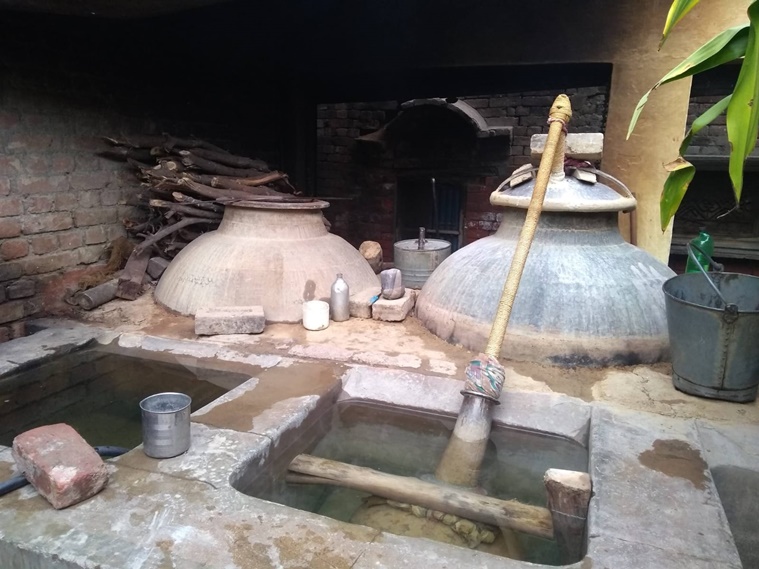 In the deg bhapka method, fumes rising from one container condense inside the other, which is filled with an essential oil, traditionally sandalwood oil. (Photo: Yashee/Indian Express)
In the deg bhapka method, fumes rising from one container condense inside the other, which is filled with an essential oil, traditionally sandalwood oil. (Photo: Yashee/Indian Express)
This mixture is then sealed in camelskin containers, so that the remaining moisture can escape through its pores.
The process is labour and skill-intensive. If the degh is too hot, it will destroy the fragrance of the delicate petals. If the bhapka isn’t cool enough, the fumes won’t condense in time. There is no fixed formula to ensure all this, and workers rely on knowledge passed down orally.
Samvedi, who graduated in biotechnology from IIT Kanpur, says there are reasons the process hasn’t been tinkered with. “Modernising the process will compromise the authenticity of our product. If we use a substitute for copper, the petals might stick to the surface of the vessel and spoil the fragrance with a hint of burning. Iron will rust and again interfere with the smell. Our perfume-making is a precise art which requires human intelligence. It can’t be totally mechanised.”
The extraction is delicate alchemy, in tune with the cycle of seasons, the weather, the soil. Thus, winter is for khus (vetiver) or shamama (a blend of warm spices and herbs). With spring come the flowers. Summer, when the soil is dry, is for mitti ka attar. The rose has to be the pink desi gulab, which is the most fragrant. Bela can only be picked at night. The time difference between the plucking of flowers and the extraction of fragrance can impact the attar quality.
Challenges the industry is facing
Over the years, the industry has faced many challenges, not the least of which is this dependence on natural ingredients. The trade of sandalwood, the preferred essential oil, is heavily regulated by the government. Around 40 kg of roses when boiled yield 5 gm of absolute, or rooh, which sells for around Rs 9 lakh per kg. It takes 80 kg of vetiver to produce 50 gm rooh.
“Musk, or kastoori, is extracted from the navel of the musk deer, whose hunting is banned. We buy kastoori at government auctions, where it sells for Rs 42 lakh per kg,” says Samvedi.
In the absence of sandalwood oil, Di-octyl Phthalate (DOP) is used as essential oil. But with synthetic perfumes a lot cheaper, attars face stiff competition. Many traders have thus branched out with soaps, shampoos, or essential oils for the aromatherapy industry. Another major buyer is the gutkha and paan masala industry, which can manufacture the smells synthetically, but depends on Kannuaj’s natural products for flavour and texture.
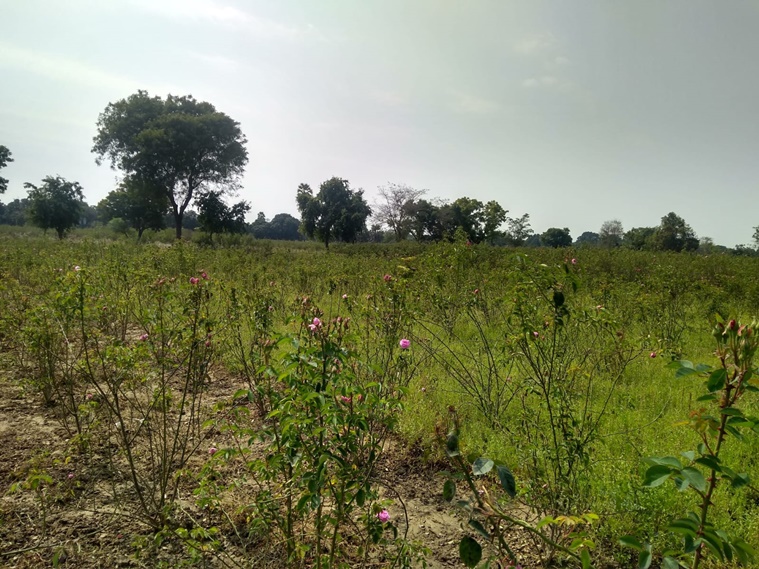 A rose farm on the outskirts of Kannauj. The fertile alluvial soil here is conducive to the farming of flowers. (Photo: Yashee/Indian Express)
A rose farm on the outskirts of Kannauj. The fertile alluvial soil here is conducive to the farming of flowers. (Photo: Yashee/Indian Express)
This emphasis on raw materials is also a reason why the industry has not taken to e-commerce platforms in a big way. “On mass e-platforms like Amazon, there is no screening for quality. Our products have to compete with synthetic substitutes of similar names, obviously selling at far lower prices,” says Samvedi.
How did the fragrance industry make its home in Kannauj?
Kannauj was a major city in ancient India, reaching the height of its importance as King Harshavardhana’s capital in the seventh century, after which it was sacked several times. Fragrances and perfumes have been popular in India for centuries, as is apparent from accounts in the Vedas, the Kamasutra, and the Charak Samhita. In fact, the ‘solah shringar’ (16 adornments) include perfumes.
With its fertile alluvial soil conducive to growing flowers, Kannauj is likely to have been manufacturing fragrances since the Gupta age, and Harshacharita, written by Banabhatta, has references to it. The deg bhapka method, however, is similar to the distillation process that came into existence later, in the Arab world.
The fragrance industry in Kannauj received a major boost under the Mughals, specially under queen Noor Jahan, an enthusiastic and innovative user of fragrances herself.
A popular claim goes that Noor Jahan’s mother Asmat Begum, or in some retellings a staff member who was a resident of Kannauj, saw rose petals leaving oily residue over warm bath water, and realised the oil could be extracted. In fact, emperor Jahangir himself is said to have written about his mother-in-law extracting rose attar.
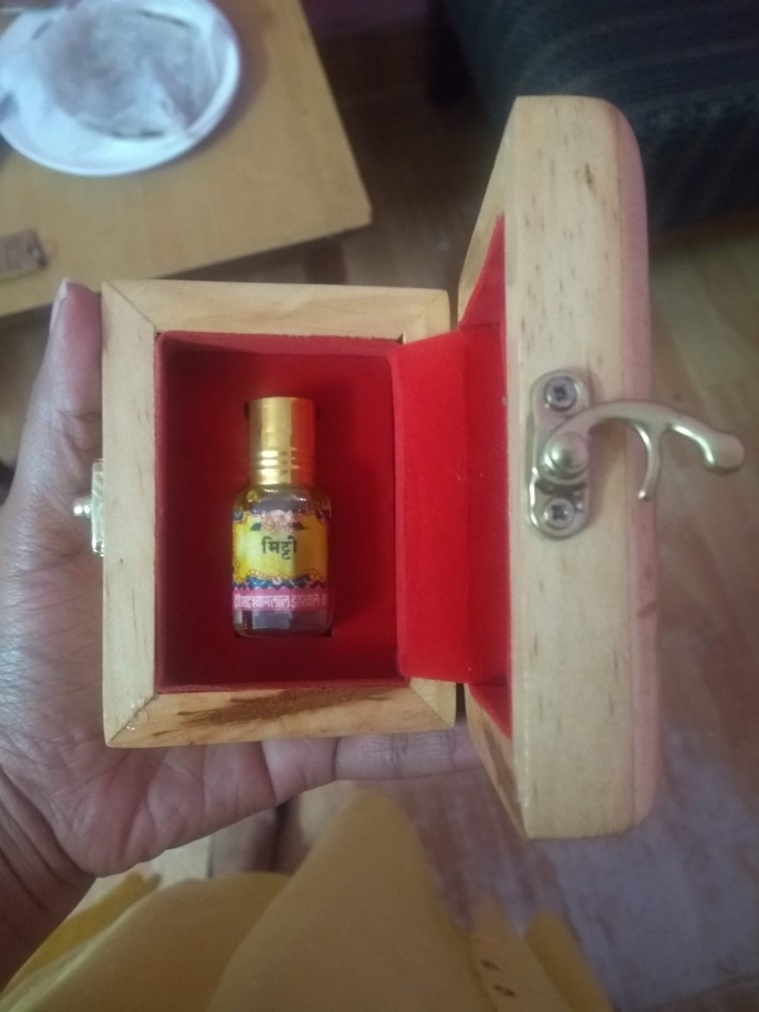 The mitti ka attar, or the smell of rain on soil (petrichor), that Kannauj is famous for. (Photo: Yashee/Indian Express)
The mitti ka attar, or the smell of rain on soil (petrichor), that Kannauj is famous for. (Photo: Yashee/Indian Express)
Ali Nadeem Rezavi, author and history professor at Aligarh Muslim University, says, “Fragrance-making was definitely known in India since ancient times. Distillation was discovered in the 10-11th century by Arabs, who then brought the method to India. While it is difficult to trace the step-by-step journey of the distillation method reaching Kannauj, under the Mughals, specially Akbar and Jahangir (their reigns together stretching from 1556 to 1627), the fragrance industry received focused royal patronage, thus helping it equip itself with the latest methods.”
About Jahangir’s account, Rezavi says he may well have witnessed Asmat Begum extracting rose attar, “but that does not necessarily mean that was the first time it was done.”
Historian William Dalrymple has also written about how India developed a sophisticated fragrance industry, mixing ancient traditions with Arabian and Persian innovations, citing records in The Ni’matnama, or the Book Of Delights, written by the King of Malwa Ghiyath Shahi, who ruled in the late 1400s.
Has that patronage continued under recent governments? Samvedi briefly says that while schemes have been planned, “not much can be seen on the ground, but of course, Covid would have derailed plans”.
A Geographical Indication tag, given by the Centre in 2014, links the fragrance industry formally to Kannauj. Samvedi, however, says the industry is more than that. “Our products are used to manufacture agarbattis, to enhance food flavours, attar is sunnat in Islam. Also, unlike the synthetic perfumes with strong scents that others can inhale, the quieter fragrance of attar is for oneself — to promote calmness and wellness in our mind. It is about offering a perfumed body to your soul and your god. In that way, our bottles capture the fragrance and ethos of India itself.”
Apr 25: Latest News
- 01
- 02
- 03
- 04
- 05








































